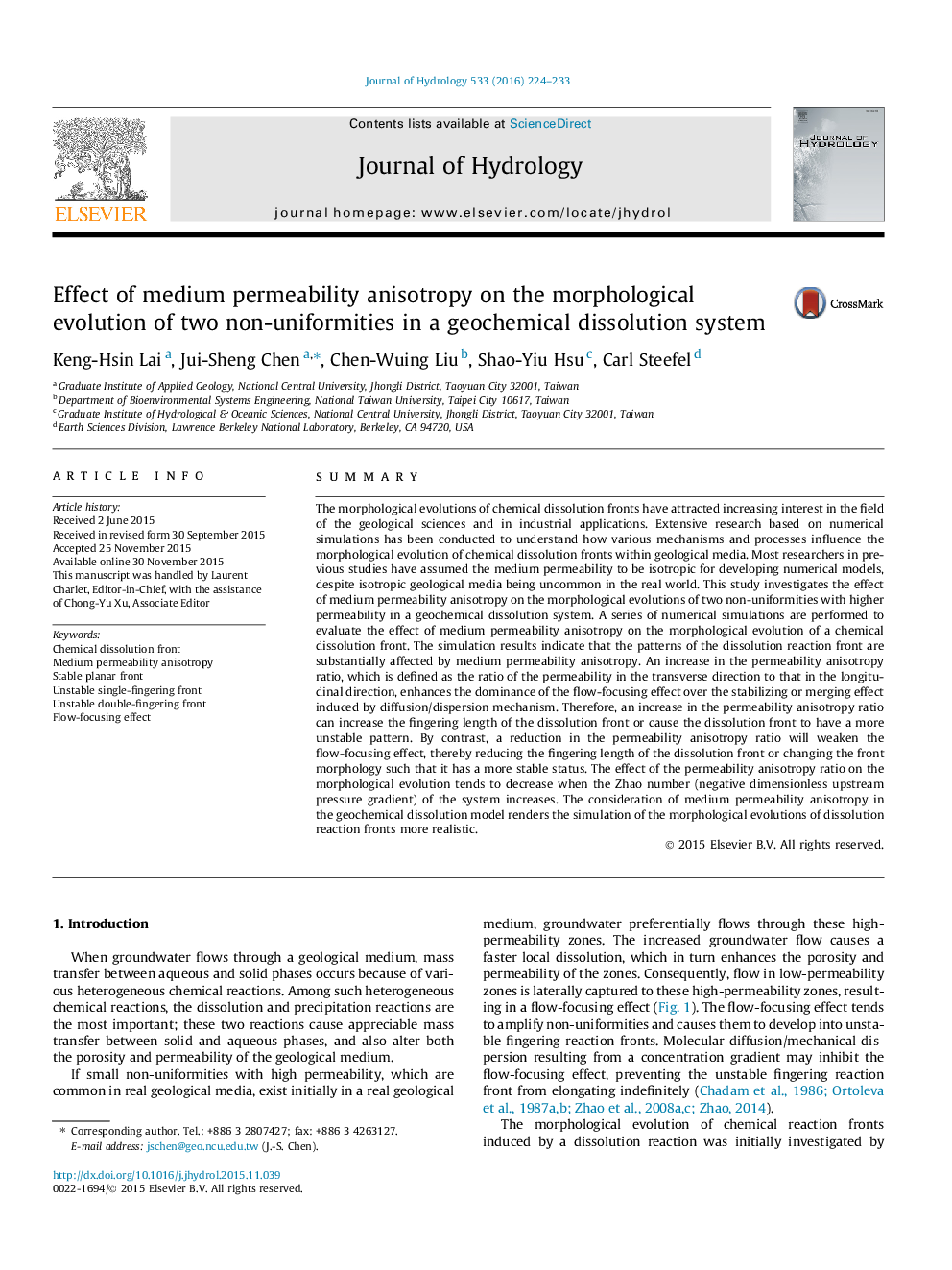| Article ID | Journal | Published Year | Pages | File Type |
|---|---|---|---|---|
| 6410486 | Journal of Hydrology | 2016 | 10 Pages |
â¢Effects of permeability anisotropy on chemical dissolution fronts.â¢Permeability anisotropy modified flow-focusing effect.â¢Permeability anisotropy influences morphologies of dissolution fronts.â¢Effects of permeability anisotropy decrease when upstream pressure gradient increases.
SummaryThe morphological evolutions of chemical dissolution fronts have attracted increasing interest in the field of the geological sciences and in industrial applications. Extensive research based on numerical simulations has been conducted to understand how various mechanisms and processes influence the morphological evolution of chemical dissolution fronts within geological media. Most researchers in previous studies have assumed the medium permeability to be isotropic for developing numerical models, despite isotropic geological media being uncommon in the real world. This study investigates the effect of medium permeability anisotropy on the morphological evolutions of two non-uniformities with higher permeability in a geochemical dissolution system. A series of numerical simulations are performed to evaluate the effect of medium permeability anisotropy on the morphological evolution of a chemical dissolution front. The simulation results indicate that the patterns of the dissolution reaction front are substantially affected by medium permeability anisotropy. An increase in the permeability anisotropy ratio, which is defined as the ratio of the permeability in the transverse direction to that in the longitudinal direction, enhances the dominance of the flow-focusing effect over the stabilizing or merging effect induced by diffusion/dispersion mechanism. Therefore, an increase in the permeability anisotropy ratio can increase the fingering length of the dissolution front or cause the dissolution front to have a more unstable pattern. By contrast, a reduction in the permeability anisotropy ratio will weaken the flow-focusing effect, thereby reducing the fingering length of the dissolution front or changing the front morphology such that it has a more stable status. The effect of the permeability anisotropy ratio on the morphological evolution tends to decrease when the Zhao number (negative dimensionless upstream pressure gradient) of the system increases. The consideration of medium permeability anisotropy in the geochemical dissolution model renders the simulation of the morphological evolutions of dissolution reaction fronts more realistic.
